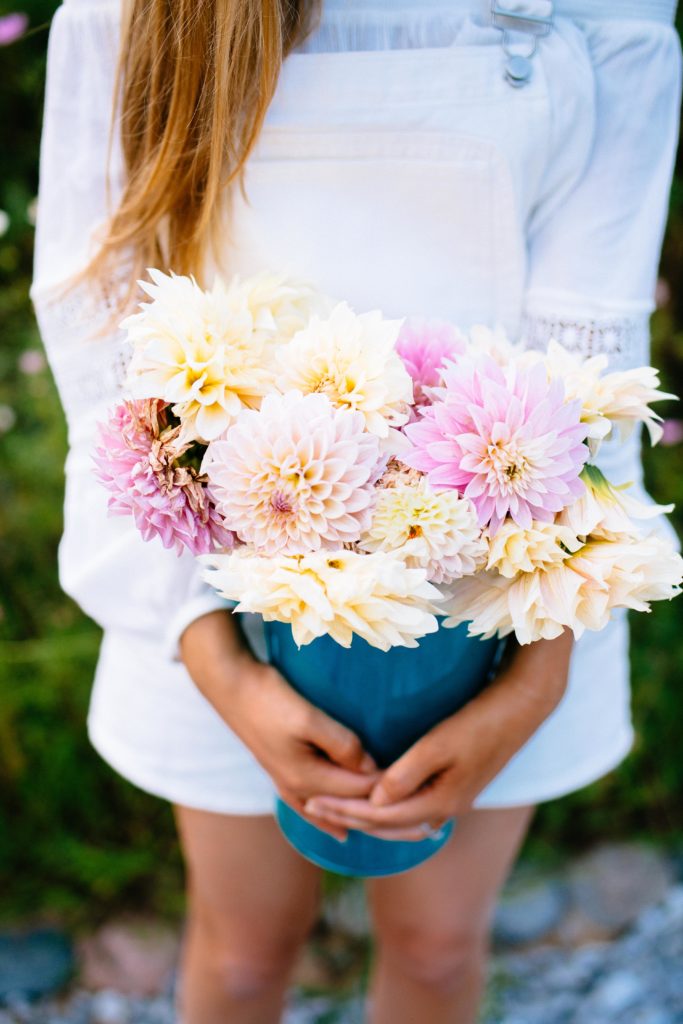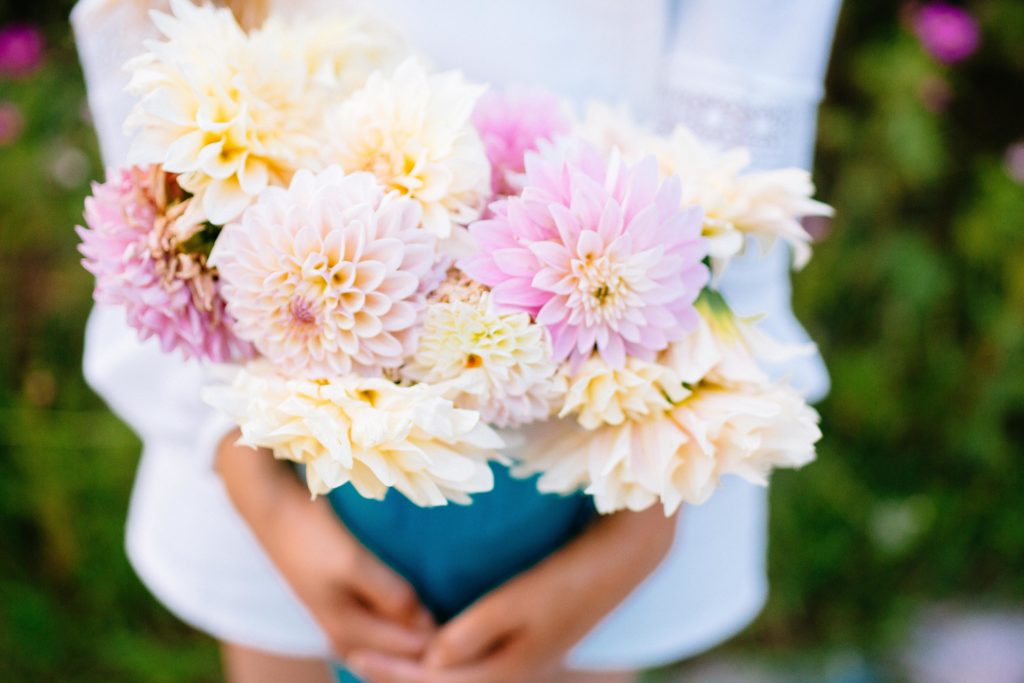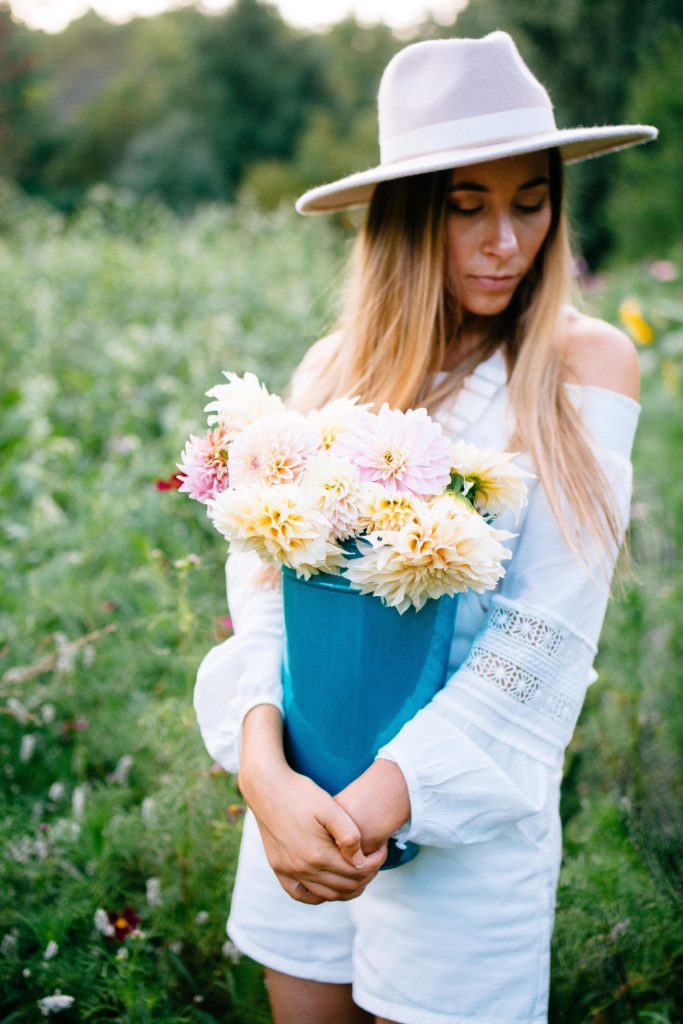
My mom has always had a green thumb. Literally since my birth I have been walking on stone pebble pathways through flower gardens, vegetable beds, and abounding greenery. The snapshots of my childhood are basically just pictures of me trying to carry our cat through zinnia plots in my bare feet with morning messy hair. In the past few years, my mom has begun to share her love for flowers and gardening with the world by starting Blossom Thyme Hill Flower Farm, where she creates gorgeous farm-to-table bouquets. I still am not sure how she does all of this– It is seriously hard work. But, the past few years, I have to say that being around all of these luscious blooms has made me want to see if the green thumb thing runs in the family.
Specifically, my mom grows wildflowers, which are popular right now for good reason: they’re pretty much always beautiful. You could gather a bundle of random wildflowers and still think, wow this actually looks really good! So, I decided that I wanted to start my own “mini patch” of wildflowers. My mom is able to grow many varieties and patches on her couple of acres– you’d be surprised how much there is! However, Jared and I live on a much smaller plot of land and I can’t really till the dirt, so I decided to try and plant mine in the easiest, most convenient way that also saves space and looks pretty in the backyard. Of course, these babies won’t pop up until spring, but when they do, you better believe they’ll be all over my Insta-feed. If you’re looking for a fun fall project that is cheap, fun, and comes with a surprise after the last frost breaks, try this for yourself!

WHAT YOU NEED TO GET STARTED
- A raised bed, container, or galvanized tub (which is what I used)
- Standard garden soil
- Wildflower seed mix
- Water/hose
- A sunny area outside
WHEN TO PLANT
You will want to wait to plant your wildflower seeds until the first frost, or until you know the seeds won’t try to germinate due to any weather that’s too warm. The goal is to get them in the ground as all plants are starting to “hibernate” so they will pop up in the spring all healthy and beautiful when all of the other plants “wake up.”
INSTRUCTIONS
- If you are using a container or tub, make sure there are holes in the bottom for drainage. I had Jared drill about eight small holes in the bottom of mine.
- Place your container in an area that has lots of sun. Wildflowers need lots of sunlight to germinate well.
- Fill your container with standard garden soil. Wildflowers don’t like soil with too much nutrient, so no need to get anything fancy or add too much compost (a little is okay). If you are concerned about drainage, you can also add gravel to the soil mix to aid with this.
- Make sure to read the back of your seed packaging to know how much to plant and to see if there are any specific directions for the flowers you chose.
- Scatter the seeds over the dirt. A tip – mix sand with your garden seed to help evenly distribute it.
- Water the seeds just enough to get the soil damp.
- You will want to dampen the soil regularly, if it is not raining often, but don’t overwater.
- Wait through the winter for your flowers to arrive!
WHERE AND WHAT TO BUY
The company, American Meadows, has varieties of seeds and seed mixes to choose from and you can specifically select a mix that is perfect for your growing “zone” (the types of plants that will grow best where you live). These mixes are true wildflower mixes: lots of colors and varieties that you might see here and there growing on the side of the road showing off bursts of color.
Another fun option are flower bulbs, which I guess aren’t technically wildflowers, but they’re very pretty, easy to grow, and will generally bloom the same time as your wildflowers in the spring. Tulips, daffodils, and ranunculus are all fun options, and you can typically find the basic colors at Lowe’s for a low price.

Happy planting!